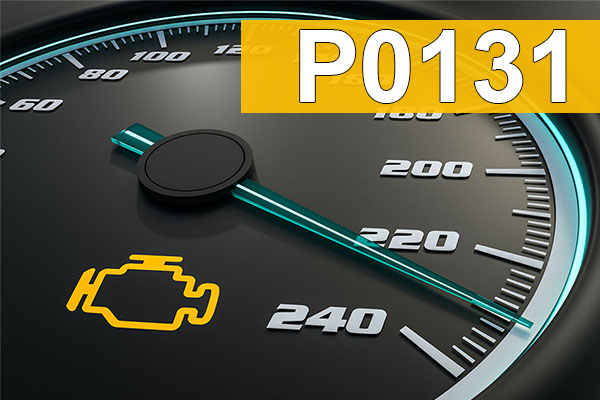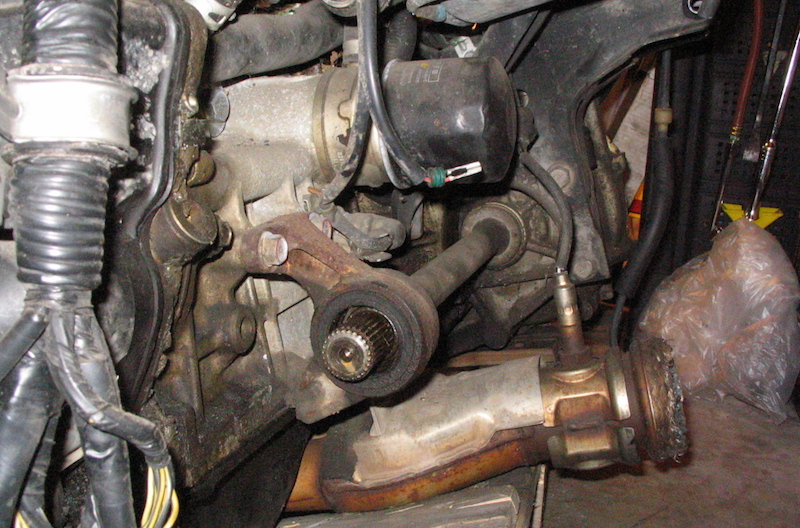You probably know that an illuminated Check Engine Light (CEL) means that there's a sensor for a system somewhere on your engine or drivetrain that has registered a reading that's outside of normal parameters. The powertrain control module (PCM) then stores that information as a diagnostic trouble code, illuminating the CEL.
The OBD-II set of standards for diagnostic codes was adopted in the mid-90s, across all makes and models. OBD-II makes troubleshooting much easier; it's a simple matter to connect a code reader device to the vehicle's diagnostic port (usually underdash on the driver's side) and access any stored codes. Those codes give you a big head start in diagnosis, but it's important to remember that sometimes a problem can cause several trouble codes that may not seem related. It's then that you have to be able to interpret the codes and read between the lines, rather than just start replacing parts.
Anytime that you have to take on a troubleshooting job involving OBD-II codes, it's a good idea to first clear all codes from the PCM and test drive the vehicle to see if the codes return. Certain codes on certain makes/models may take several failure cycles to register in the PCM again. Also, do some research on your year/make/model and see if there's a history of your particular problem for that vehicle. There may even be factory recalls or technical service bulletins that can point you in the right direction.
Note: Code scanning is one of the free services we offer at Advance Auto Parts stores.
P0112 — What It Means
Your car's fuel delivery system relies on information from several sensors, and one of them is the intake air temperature (IAT) sensor. The density of air changes with ambient air temperature; colder air is denser, which affects fuel metering. The PCM takes information from the IAT sensor and uses it to determine fuel metering strategy.
The P0112 code is stored if the PCM detects a voltage from the IAT sensor that's under .018 volt for .5 second or more.
Symptoms
- Hard starting
- Poor fuel economy
- Rough idle
- Poor acceleration
- Lean-running or rich-running condition
- Black smoke from tailpipe on acceleration
Note: A P0112 code may put the engine into fail-safe mode on some vehicles. Fail-safe mode can vary from one make/model to another, so symptoms might vary as well.
What Happens If I Ignore It?
Intake air temperature is important not just for the density of the air, but for emissions. Hot intake air means higher combustion chamber temperatures, unless the PCM can account for it in fuel metering. Higher combustion temps mean higher levels of NOx in your exhaust, so a P0112 code would mean a failed emissions test as well as poor fuel economy and performance. In some instances, a P0112 code can cause pinging on acceleration, which is damaging to pistons.
Diagnosis and Repair
It's worth noting that by year/make/model/engine, the location of the IAT filter can vary considerably. It might be located inside the air filter box, farther downstream behind the duct from the air filter box, screwed into the intake manifold or it might even be part of the Mass Airflow Sensor. If it's integrated with the MAF sensor, you might see codes related to that sensor as well. In any event, it's a good idea to check a shop manual to be sure where this sensor is located on your vehicle.
Here's how to diagnose and repair the issue:
- Check the wiring going to the IAT sensor for looseness, corrosion, damage or poor connection. Perform a wiggle test.
- Inspect the air intake duct leading to the air filter box. A loose air intake duct can mean that the intake would be taking in hot air from the engine compartment. If these parts check out okay...
- Before the engine is warmed up, connect the code reader and take a reading on the coolant temperature compared to readings from the IAT. They should be pretty close to the same (and close to ambient air temps) when the engine is still cold.
- If all the electrical connections look good, unplug the IAT sensor with key on/engine off and recheck the readings with the code reader. Readings should be minimum, about -20 degrees F.
- The higher the temperature, the lower the voltage readings should be. At 212 degrees, expect 0.75v and at -40 degrees, look for 4.95v.
- Carefully use a heat gun or blow dryer on the IAT sensor and see if readings change. If not, and if the wiring still looks good, replace the IAT sensor, clear trouble codes and test-drive the vehicle again.









